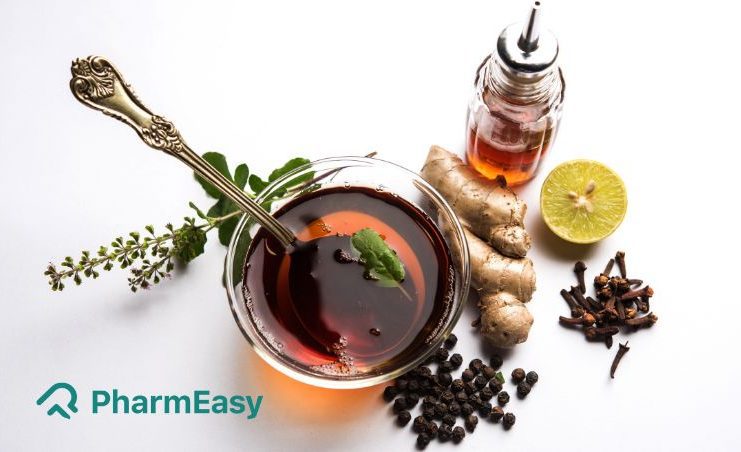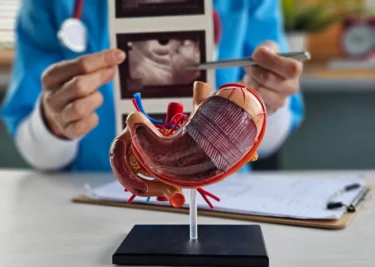Chandanasava: Uses, Benefits and Side Effects by Dr. Smita Barode
By Dr Smita Barode +2 more

Get,

to manage your symptom
Get your,


4 Cr+ families
benefitted

OTP sent to 9988776655



You’ve successfully subscribed to receive
doctor-approved tips on
Whatsapp

Get ready to feel your best.

Hi There,
Download the PharmEasy App now!!


Register to Avail the Offer
Send OTPBy continuing, you agree with our Privacy Policy and Terms and Conditions

Hi There,
Sign up on PharmEasy now!!
Trusted by 4 crore+ families

OTP sent to 9988776655



You have unlocked 25% off on medicines




Code: NU25
By Dr Smita Barode +2 more
Table of Contents
Ayurvedic formulations may have emerged as a traditional alternative for a variety of health problems. Chandanasava is one such Ayurvedic formulation that may be considered a traditional medicine. Chandanasava is an Ayurvedic polyherbal formulation prepared using one or more medicinal herbs. The name Chandanasava is derived from one of the main ingredients, Chandan, known as sandalwood in English. Asava in Chandanasava refers to a fermented infusion that is produced by microbes. Chandanasava has a moderate alcohol content and is made with herbal juices from 24 different herbs. Chandanasava can be fermented with sugar, honey, or jaggery. For Chandanasava preparation, an equal amount of herb powder is mixed with water, as well as jaggery and sugar, and the mixture is boiled and chilled. This is then poured into large vessels and left to ferment for several days. It may belong to the alcohol-based category of drugs. Chandanasava could have been used as a valuable medicine to enhance health1,3. Let us discuss the health benefits of Chandanasava, its nutritional value, potential uses, and more.
Below listed are the Chandanasava ingredients:

Furthermore, phytochemical compounds like glucosides, alkaloids, phytosterols, stilbenes, terpenoids, phenols, flavonoids, glycosides, tannins, saponins and various alcohols and non‑volatile compounds may also be present in it1,2.
The benefits of Chandanasava may be due to the following properties:
Chandanasava may be ideal for enhancing human health2. The following may be the potential uses of Chandanasava:

Women in their forties and fifties may experience physiological changes that cause mild to severe symptoms such as hot flashes, body heat, night sweats, and a burning sensation. Certain phytochemicals in Chandanasava may have cooling properties. Regularly consuming Chandanasava (15-30 ml) with water may produce cooling effects within the body. These properties of Chandanasava may aid in the relief of symptoms such as hot flashes, body heat, night sweats, and a burning sensation5. More human research is required to suggest Chandanasava’s true use for body heat. Consult your doctor if you experience excessive body heat. Do not attempt to self-medicate.

A study4 by Vinothkanna et. al. in 2022 showed Chandanasava may be used against chronic kidney diseases (a long-term kidney failure). It may contain compounds such as piperine and melatonin which may have the potential to stop the bacterial layer (biofilm) formation of infectious diseases involved in kidney diseases. More clinical research is required to form the true scope of Chandanasava against chronic kidney diseases. If you have kidney dysfunction, seek medical attention.
Chandanasava is a polyherbal Ayurvedic formulation. This formulation consists of many nutrients. Research suggests that there are some ten bioactive compounds. These bioactive compounds might be beneficial for managing various systemic diseases like chronic kidney diseases, cardiovascular diseases, etc4.
Dr. Siddharth Gupta, B.A.M.S, M.D (Ayu)

The most common clinical condition among people may be urinary tract infection. Burning sensations and dysuria are possible side effects (difficulty in urination). Chandanasava may be used as a urinary antiseptic. It may have a diuretic effect that may increase urine production and help clear out the urine passage, providing relief from urinary tract infections. Goel and Singh (1991) discovered that the ingredients in Chandanasava may have antimicrobial and antiseptic activity in a clinical trial. This activity may aid in the relief of symptoms such as burning and dysuria6. More human trials are required to establish the efficacy of Chandanasava for UTI. However, if you have a UTI, please take proper medication and do not self-medicate.

Dixit et al. (2012)3 discovered that Chandanasava has antiulcer activity in animals. A stomach juice imbalance can cause a peptic ulcer. Chandanasava may be used as a therapeutic agent to improve stomach conditions. It contains flavonoids, tannins, and terpenoids, all of which have antiulcer properties. As a result, Chandanasava may be beneficial in the healing of peptic ulcers in patients. However, more research is needed to determine Chandanasava’s antiulcer activity. Consult a doctor if you have ulcers.

Though studies show the potential uses of Chandanasava in various conditions, these are insufficient and there is a necessity for further studies to develop the scope of the benefits of Chandanasava on human health.
You should consult a qualified doctor before having Chandanasava in large quantities. Do not discontinue or replace an ongoing modern medical treatment with an Ayurvedic/herbal preparation of Chandanasava without consulting an Ayurvedic physician. They will guide you with its form and dosage per your health condition.
However, more human research is needed to study the adverse effects of Chandanasava on humans. You must consult your doctors to get the proper treatment if you encounter side effects.
Chandanasava is formulated using self-fermentation methods known as Arishtas and Asavas. Studies show that Chandanasava might have antibacterial and anthelmintic activities and might be useful against bacterial and parasitic infections7.
Dr. Rajeev Singh, BAMS
Chandanasava in small and prescribed dosages might be safe. However, having it in larger amounts may harm the body. Therefore, a few precautions are essential:
Also Read: Trikatu Churna: Uses, Benefits and Side Effects by Dr. Rajeev Singh
Chandanasava is a polyherbal Ayurvedic preparation. Its ingredients may or may not interact with other drugs. Further clinical studies are needed to suggest the herb-drug interaction between Chandanasava and other medicines. We advise that you consult with a doctor before taking Chandanasava and only take it in the prescribed dosage.
Also Read: Vasaka (Malabar Nut): Uses, Benefits and Side Effects by Dr. Rajeev Singh
Chandanasava is a polyherbal Ayurvedic formulation. Chandanasava is a fermented formulation made from 24 herbal ingredients. Chandanasava preparation is done using an equal amount of herbs powder in water, jaggery and sugar and boiled and cooled. Then this is poured into big vessels and allowed to ferment for days1.
The Chandanasava ingredients may include Chandan, Raktachandana, Hribera, Priyangu, Musta, Kashmari, Lodhra, Patola, Madhuka, Indivara, Parpata, Manjistha, Ashwattha, Patha, Vata, Priyangu, Bhunimba, Kanchanara, Shati, Rasna, Mocharasa Amra, Dhataki, Guda, Mridvika, water and sugar1.
Chandanasava may have properties such as diuretic, antioxidant, antimicrobial, appetizer, antiseptic, anti-inflammatory, analgesic and anti-ulcer activity1,6. More studies are needed to confirm the true properties of Chandanasava in humans.
Chandanasava may be taken with water5. However, consult with doctors, they will guide you with its better form and dosage according to your health condition.
In a clinical trial6 by Goel and Singh, 1991 found that the ingredients of Chandanasava may have antiseptic activity and antimicrobial activity. It may provide relief against urinary tract infections. This activity may help overcome symptoms like burning sensation and dysuria (burning urination). More human studies are necessary to state the uses of Chandanasava for UTI. However, if you suspect UTI, take proper medicine and do not self-medicate.
1. Vinothkanna A, Sekar S. Influence of intrinsic microbes on phytochemical changes and antioxidant activity of the Ayurvedic fermented medicines: Balarishta and Chandanasava. Pharmaco Study. 2018; 39:169–81. Available from: https://pubmed.ncbi.nlm.nih.gov/31000995/
2. Vinothkanna A, Karthikeyan B, Vijayan R, Sekar S. Assessment of anti-arthritic potential of traditionally fermented ayurvedic polyherbal product chandanasava by molecular modelling, docking and dynamics approaches. Intern J of Comput Biol and Drug Design. 2018;11(4):346–68. Available from: https://www.researchgate.net/publication/328949445_Assessment_of_anti-arthritic_potential_of_traditionally_fermented_ayurvedic_polyherbal_product_chandanasava_by_molecular_modelling_docking_and_dynamics_approaches
3. Dixit P, Sharma P, Jain DK, Jharia V. Systematic Evaluation of Antiulcer Activity of Herbal Formulation ‘Chandanasava’ in Rats. Asian Paci J of Trop Dis. 2012;2(SUPPL.1):192–6. Available from: https://www.researchgate.net/publication/257746795_Systematic_Evaluation_of_Antiulcer_Activity_of_Herbal_Formulation_’Chandanasava’_in_Rats
4. Vinothkanna A, Prathiviraj R, Sivakumar R, Ma Y, Sekar S. GC–MS and Network Pharmacology Analysis of the Ayurvedic Fermented Medicine, Chandanasava, Against Chronic Kidney and Cardiovascular Diseases. Appl Biochem and Biotech. 2022;1–26. Available from: https://link.springer.com/article/10.1007/s12010-022-04242-7
5. Choudhary P, Smitha MV. The Prevalence of Menopausal Symptoms and its Association with Marital Relationship in Perimenopausal Women of Eastern India. J Midlife Health. 2025 Jul-Sep;16(3):285-294. doi: 10.4103/jmh.jmh_82_25. Epub 2025 Sep 5. PMID: 40951856; PMCID: PMC12431706. Available from: https://pmc.ncbi.nlm.nih.gov/articles/PMC12431706/
6. Goel K, Singh R. Clinical Trial of Candanasava, In the Treatment of Urinary Tract Infection. Vol. Anci Sci of Life.1991;X(4):248–52. Available from: https://pmc.ncbi.nlm.nih.gov/articles/PMC3331297/
7. Kumar SV, Sandeep M, Kamal D, et al. Antibacterial and anthelmintic activity of selected fermented Ayurvedic herbal formulations. Drug Invention Today. 2010 Jul;2(7):347-348. Available from: https://web.p.ebscohost.com/
Disclaimer: The information provided here is for educational/awareness purposes only and is not intended to be a substitute for medical treatment by a healthcare professional and should not be relied upon to diagnose or treat any medical condition. The reader should consult a registered medical practitioner to determine the appropriateness of the information before consuming any medication. PharmEasy does not provide any guarantee or warranty (express or implied) regarding the accuracy, adequacy, completeness, legality, reliability, or usefulness of the information; and disclaims any liability arising thereof.
Links and product recommendations in the information provided here are advertisements of third-party products available on the website. PharmEasy does not make any representation of the accuracy or suitability of such products/services. Advertisements do not influence the editorial decisions or content. The information in this blog is subject to change without notice. The authors and administrators reserve the right to modify, add, or remove content without notification. It is your responsibility to review this disclaimer regularly for any changes.
Comments

Leave your comment...
You may also like
Comments